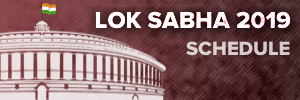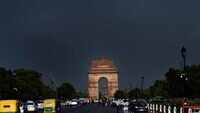
Nagpur: Scam-hit Navodaya Urban Cooperative Bank whose board of directors are now facing charges of fraud and forgery does not have any tangible asset in its name to realize the depositors’ dues.
The cooperative bank had gone into liquidation after its banking licence was cancelled six months ago. Earlier this week, the police’s economic offences wing (EOW) had booked the board headed by former Congress MLA Ashok Dhawad for a Rs38 crore fraud.
In October, a cooperatives’ department officer of the rank of assistant registrar was appointed as the bank’s liquidator. His job is to sell off the assets and realize depositors’ money locked in the bank. So far there has been no realization.
Sources aware of the affair said all that the bank has in the name of its own assets is cash collected as deposits.
There are around 13,000 depositors whose Rs52 crore has been parked in the bank. Their money could not be withdrawn after RBI imposed restrictions on withdrawals in December 2016 to check further deterioration.
Finally, the licence was cancelled. The cash in hand comes to around 25% of the total value of deposits. The rest is locked up in loans. Sources said the liquidator has not come across any land, building or any other tangible assets in the bank’s name that can be sold to realize the depositors’ dues.
Now what remains are the assets offered as security by the borrowers. However, there are doubts over a number of such properties. One of the major charges against board of directors is that borrowers’ assets were released even before the dues were cleared, said a source.
The liquidator is now depending on the claims granted by the deposit insurance and guarantee corporation (DICGC). A body under the Reserve Bank of India (RBI), the DICGC provides insurance for deposits up to one lakh. The process for putting up the claim is under way, said a source.
Since this is a small bank it is expected that the DICGC claim will cover majority of the dues, said a source.
Sources said a sizeable amount of funds were siphoned off in the name of cash lifted for miscellaneous expenses. The cash was lifted against vouchers and repaid through back-dated fictitious entries. The entries were made in the computerized accounts on June 30, 2016 but shown as cash received as on March 31.
As the cash was not there, fake loans were granted to show the outgo and balance the entries, said a source.
The cooperative bank had gone into liquidation after its banking licence was cancelled six months ago. Earlier this week, the police’s economic offences wing (EOW) had booked the board headed by former Congress MLA Ashok Dhawad for a Rs38 crore fraud.
In October, a cooperatives’ department officer of the rank of assistant registrar was appointed as the bank’s liquidator. His job is to sell off the assets and realize depositors’ money locked in the bank. So far there has been no realization.
Sources aware of the affair said all that the bank has in the name of its own assets is cash collected as deposits.
There are around 13,000 depositors whose Rs52 crore has been parked in the bank. Their money could not be withdrawn after RBI imposed restrictions on withdrawals in December 2016 to check further deterioration.
Finally, the licence was cancelled. The cash in hand comes to around 25% of the total value of deposits. The rest is locked up in loans. Sources said the liquidator has not come across any land, building or any other tangible assets in the bank’s name that can be sold to realize the depositors’ dues.
Now what remains are the assets offered as security by the borrowers. However, there are doubts over a number of such properties. One of the major charges against board of directors is that borrowers’ assets were released even before the dues were cleared, said a source.
The liquidator is now depending on the claims granted by the deposit insurance and guarantee corporation (DICGC). A body under the Reserve Bank of India (RBI), the DICGC provides insurance for deposits up to one lakh. The process for putting up the claim is under way, said a source.
Since this is a small bank it is expected that the DICGC claim will cover majority of the dues, said a source.
Sources said a sizeable amount of funds were siphoned off in the name of cash lifted for miscellaneous expenses. The cash was lifted against vouchers and repaid through back-dated fictitious entries. The entries were made in the computerized accounts on June 30, 2016 but shown as cash received as on March 31.
As the cash was not there, fake loans were granted to show the outgo and balance the entries, said a source.
Make sense of the 2019 Lok Sabha elections and results on May 23 with TOI. Follow us to track latest news, live updates, news analysis and cutting-edge data analytics. Track live election results, the big trends and fastest updates on counting day with India's largest news network.
#ElectionsWithTimes
Quick Links
Lok Sabha Election Schedule 2019Lok Sabha Election NewsDelhi Capitals teamMI team 2019Rajasthan Royals 2019RCB team 2019Maharashtra Lok Sabha ConstituenciesBJP Candidate ListBJP List 2019 TamilnaduShiv Sena List 2019AP BJP List 2019Mamata BanerjeeBJP List 2019 MaharashtraPriyanka GandhiBJP List 2019 KarnatakaAMMK Candidate List 2019BJP List 2019 WBLok Sabha Elections in Tamil NaduBSP List 2019 UPNews in TamilLok Sabha Poll 2019Satta Matka 2018PM ModiMahagathbandhanNagpur BJP Candidate ListChandrababu NaiduTamil Nadu ElectionsUrmila MatondkarNews in TeluguMadras High CourtTejashwi YadavArvind KejriwalTejasvi SuryaPawan KalyanArvind KejriwalYogi AdityanathJaya PradaSatta King 2019Srinagar encounter
Get the app









